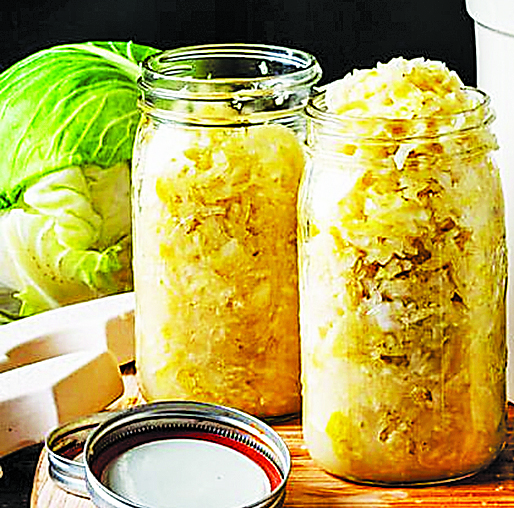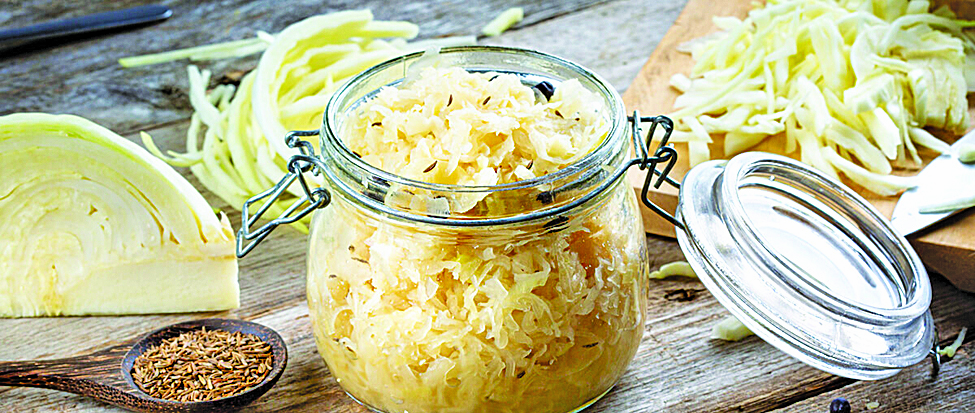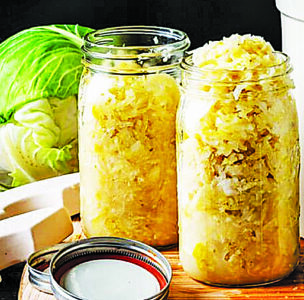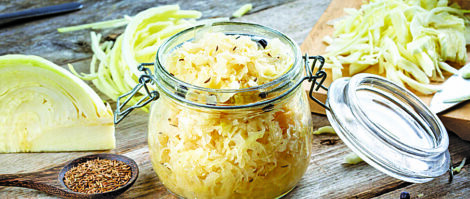Free workshop offered on sauerkraut
- Photo courtesy of ROSE MASSIE Cabbage might last several months in the refrigerator, but by fermenting it to make sauerkraut it can be preserved for a year or longer.
- Photo courtesy of ROSE MASSIE Fermenting foods like cabbage gave our ancestors the option of prolonging the freshness.

Photo courtesy of ROSE MASSIE Cabbage might last several months in the refrigerator, but by fermenting it to make sauerkraut it can be preserved for a year or longer.
STRODES MILLS — Fermented foods have been a staple of diets worldwide for centuries, offering bold flavors, unique textures and impressive health benefits.
From tangy yogurt and crunchy kimchi to rich sourdough bread, these foods are created through a natural fermentation process that enhances taste and nutrition.
Throughout history, fermenting foods gave our ancestors the option of prolonging the freshness of grains, vegetables and milk that were available to them during different seasons.
For example, cabbage might last several months in the refrigerator, but by fermenting it to make sauerkraut it can be preserved for a year or longer.
Plus, not only does it preserve cabbage, but it produces a fantastically nutritious food with healthy bacteria and beneficial microbes which improve digestion and gut health due to its rich

Photo courtesy of ROSE MASSIE Fermenting foods like cabbage gave our ancestors the option of prolonging the freshness.
probiotic content.
That suits Rose Massie, a volunteer with Community Partnerships in Lewistown, just fine.
“We tend to cook a lot of our foods because fresh foods spoil faster than cooked foods.” Massie explained. “We don’t like to say the word ‘rot’ when talking about foods, but it happens.
“Just watch a tomato, onion, cabbage or any such foods if left on the kitchen counter and it will not be long until it starts to deteriorate,” Massie added. “Generations before us learned that if you ferment foods, they will be preserved for very long periods of time.”
Massie said there are so many health benefits to sauerkraut. Additionally, sauerkraut is easy to make with only a few ingredients, and it’s relatively inexpensive.
“Homemade sauerkraut is so much better tasting than any you can buy in the store,” Massie quipped.
Anyone who would like to make their own sauerkraut is invited to a free Garden to Table workshop, “Making Sauerkraut,” on Tuesday, Oct. 28, from 6:30 to 7:30 p.m. at the Body and Soul Community Center in Strodes Mills.
The workshop is supported by Mifflin Juniata United Way and Community Partnerships.
Attendees are requested to bring a 3 ½ pound head cabbage, good cutting knife, cutting board and a big dish.
For the record, Massie does a lot of “putting up” — drying, freezing, canning or fermenting — for the winter from her own garden. She is stored enough, so she and husband, John, are enjoying eating right from the garden.
“Our garden did great despite the dry weather,” Massie said. “I am still picking beans, tomatoes, squash, okra, eggplant, broccoli, kale, Brussel sprouts and my fall-planted spinach and lettuce.”
If you plan to attend, please contact Massie at rmassie@cpartnerships.com or call (717) 899-6044.



